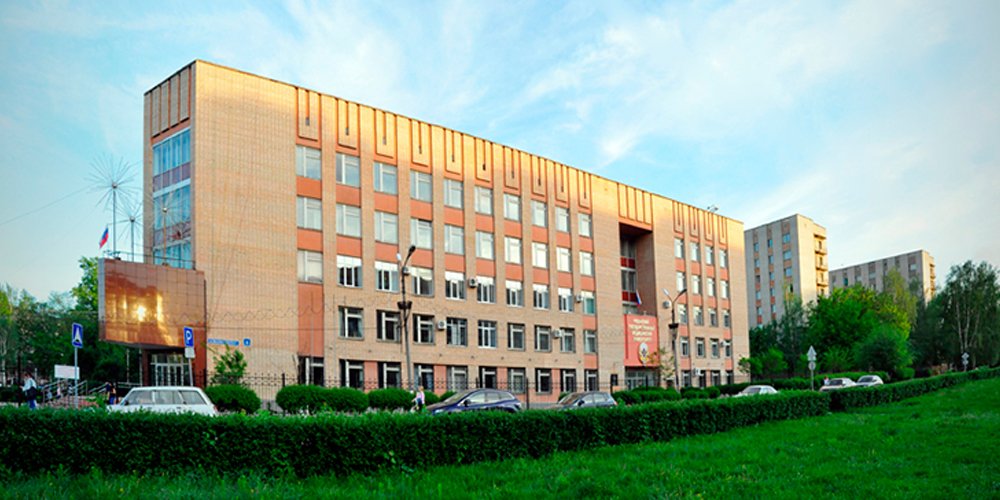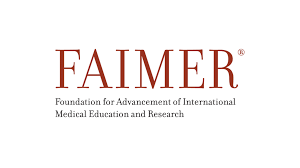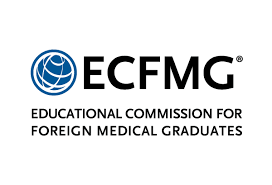
Historical Evolution of Rostov State Medical University
Inception at Donskoi University: The roots of Rostov State Medical University trace back to 1915 when it originated as a medical faculty within Donskoi University. In the initial phase, it served as an integral part of Donskoi University’s academic landscape.
Independence and Establishment (1930): The significant transformation occurred in 1930 when the medical faculty gained autonomy, evolving into an independent medical institute. This marked the establishment of Rostov State Medical University in its present form, symbolizing a pivotal moment in its institutional history.
Contributions to Medical Excellence: Over the years, Rostov State Medical University has earned distinction for fostering and nurturing some of the finest talents in the medical field. Its commitment to medical education and research has contributed significantly to the healthcare sector.
Strategic Location in Rostov: Situated in the vibrant city of Rostov, recognized as an educational and cultural hub in Russia, the university holds a prime position. This strategic location attracts a substantial number of applications, both from Russian and international students, each year.
Global Appeal and Academic Excellence: The university’s global appeal is underscored by the diverse pool of applicants seeking quality medical education. With a focus on academic excellence, Rostov State Medical University continues to play a crucial role in shaping the future of medical professionals.





City Overview: Rostov-on-Don, or simply Rostov, stands as a prominent port city and the administrative hub of Rostov Oblast and the Southern Federal District of Russia. Positioned in the southeastern part of the East European Plain along the Don River, this bustling metropolis is located 32 kilometers from the Sea of Azov, showcasing its strategic geographical significance.
Cultural Heart of Southern Russia: With a population exceeding one million, Rostov-on-Don is not just an administrative center but a vital cultural hub in Southern Russia. Its rich heritage and cultural vibrancy make it a significant contributor to the region’s intellectual and artistic landscape.
Climate and Atmosphere: The city experiences a humid continental climate, marked by moderately cold winters and warm, humid summers. Albert Parry, a native of Rostov-on-Don, vividly describes the city’s summers, blending brassy sunlit days with cool evenings along the Don River.
Transportation Network: Rostov-on-Don boasts a comprehensive transportation network that includes buses, trolleybuses, trams, and marshrutkas. While the idea of a metro was considered in the past, recent developments have shifted focus towards a high-speed tramway. The city’s international airport, Platov International Airport, facilitates domestic and international travel.
River Port and Railways: The international river port specializes in handling minerals and timber, showcasing the city’s role in trade and commerce. Rostov-on-Don is well-connected by rail, with key stations like “Rostov-Glavny” and “Rostov-Prigorodny.” The North Caucasus Railway Administration Building adds to the city’s railway infrastructure.
Highways and Connectivity: The city is crisscrossed by highways of federal and regional significance, with the M-4 “Don” route passing to the east. The “Rostov-Novoshakhtinsk” highway connects the city to the larger transportation network.
Rostov-on-Don thrives at the intersection of history, commerce, and modernity, offering a dynamic living experience for its residents and visitors.
In the realm of medicine, Rostov State Medical University has secured a noteworthy position on the global stage. Let’s delve into its standing across different geographical areas:
World Ranking: Rostov State Medical University holds the 2671st position globally, reflecting its contribution and recognition in the field of medicine on a worldwide scale.
Eastern Europe: Within Eastern Europe, the university stands at an impressive 188th position, highlighting its significance and influence in shaping medical education and practice in this region.
BRIICS Nations: In the broader context of the BRICS nations (Brazil, Russia, India, Indonesia, China, and South Africa), Rostov State Medical University secures the 619th position. This positioning underscores its role in contributing to medical advancements within this influential group of countries.
Russian Federation: On a national scale within the Russian Federation, the university holds a remarkable 43rd position. This emphasizes its pivotal role in the medical landscape of Russia.
Rostov State Medical University emerges as a key player, not only within Russia but also on the global stage, making substantial strides in the field of medicine.





| Fact | Details |
|---|---|
| Intake for MBBS Course | September |
| NEET Qualification | Yes, Required |
| Duration of MBBS Course | 6 years (including internship) |
| Medium of Teaching | English and Russian |
| University Recognition | WHO & NMC approved |
| Global Ranking | 2671st worldwide, 188th in Eastern Europe |
| Contribution to BRIICS Nations | 619th among BRICS nations |
| National Standing | 43rd in the Russian Federation |
| Specializations | Focus on diverse medical specializations |
| Research Opportunities | Active involvement in medical research |
1. International Welcome:
2. Rich History:
3. Practical Learning:
4. Benefits of MBBS in Russia:
5. Cultural Exposure:
6. Academic Excellence:
7. Campus Establishment:
8. Graduation Milestone:
9. Academic Structure:
10. Student Community:
Rostov State Medical University stands as a beacon of academic excellence, fostering a global community of aspiring medical professionals.
1. Campus Atmosphere:
Rostov State Medical University (RostSMU) offers an exceptional environment for academic and personal growth.
2. Global Exposure:
Enrolled MBBS students, both local and international, benefit from extensive exposure, fostering a dynamic exchange of ideas among genius minds worldwide.
3. Holistic Development:
RostSMU’s campus actively promotes cultural and extracurricular activities, enhancing the overall personality and traits of each MBBS student.
4. International Engagement:
Students studying MBBS at Rostov State Medical University experience a diverse and enriching environment for both academic and non-academic pursuits.
5. Safety and Security Measures:
Addressing concerns of parents and students, RostSMU ensures a peaceful and convenient internal environment. Additionally, the city of Rostov-On-Don upholds impressive safety measures, particularly catering to the well-being of foreign students pursuing MBBS studies in Russia.
1. Faculty of General Medicine:
2. Faculty of Dentistry:
3. Faculty of Pediatrics:
4. Faculty of Pharmacy:
5. Faculty of Medico-prophylactics:
6. Faculty of International Students:
7. Faculty of Postgraduate and Continuous Education:
8. Faculty of Armed Force Medicine:
9. Faculty of English Sector:
| Year/Semester | Courses |
|---|---|
| 1st Year | |
| Semester 1 | Anatomy |
| Semester 2 | Anatomy & Histology |
| 2nd Year | |
| Semester 3 | Histology, Biochemistry, Anatomy, Physiology |
| Semester 4 | Biochemistry, Microbiology, Physiology |
| 3rd Year | |
| Semester 5 | Pathology, Pharmacology, Microbiology, Pathophysiology |
| Semester 6 | Pathology, Pathophysiology, Pharmacology, Genetics and Principles of Clinical Medicine |
| 4th-6th Year | |
| Semester 7-12 | General Surgery, Primary Care Medicine, Oncology, Psychiatry, Pediatrics, Cardiology, ENT, Neurology, Obstetrics and Gynecology, Internal Medicine, Neurology and Psychiatry, Psychology, Emergency Medicine |
Eligibility criteria for MBBS admission at Rostov State Medical University adhere to the guidelines set by the National Medical Commission (NMC) for Indian students. The requirements are outlined below:
Academic Performance:
NEET Qualification:
Age Requirement:
Hostel Accommodation:
Diverse Community Living:
Hostel Management:
Facilities for Academic and Physical Development:
Self-Cooking Facilities:
Well-Furnished Rooms:
Convenient Location:
Step 1: Initial Counseling
Step 2: Submission of Application
Step 3: Payment of Application Fee
Step 4: University Admission
Step 5: payment of 1st year Tuition Fees
Step 6: payment of Visa Processing & Documentation Charges
Step 7: Invitation Letter
Step 8: Visa Application
Step 9: Payment of Consultancy Service Charges
Step 10: Purchase of Air Ticket
Step 11: Document Safety
Step 12: Airport Reception and Briefing
Step 13: Arrival and Enrollment
Documents Required:
To ensure a smooth MBBS admission process Indian students are required to submit the following documents. Please note that all documents must be translated into Russian and duly certified at a consular department of the embassy (This will be taken care by RICH GLOBAL EDU)
Educational Documents:
NEET Exam Related:
Identification and Travel Documents:
Photographs:
Health and Safety Documents:
Ensuring that these documents are properly translated and certified is crucial for a successful application process.
A Breakdown Over the Six Years
1st Year:
2nd Year Onwards:
Notably, any one-time charges have been excluded for simplicity and ease of understanding.
*Food/Indian Mess Cost = 100 to 120 USD Per Month
Additional Expenses only in 1st year
| Expense Component | Cost (INR) |
|---|---|
| Application Fees | INR 10,000 |
|
Documentation & Visa Processing Charges This includes:
|
INR 1,00,000 |
| Consultancy Charges | INR 50,000 |
| Air Ticket | INR 30,000 – INR 40,000 |
Countries for MBBS Abroad
Top Universities for MBBS
FAQs
MBBS in Moldova
MBBS in Nepal
MBBS in USA
© 2024 Rich Global Edu